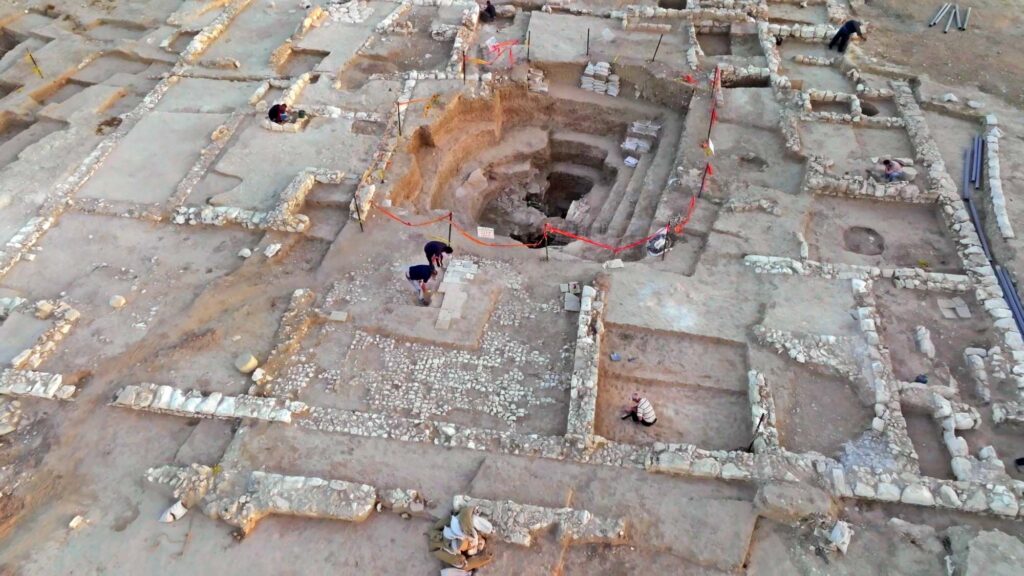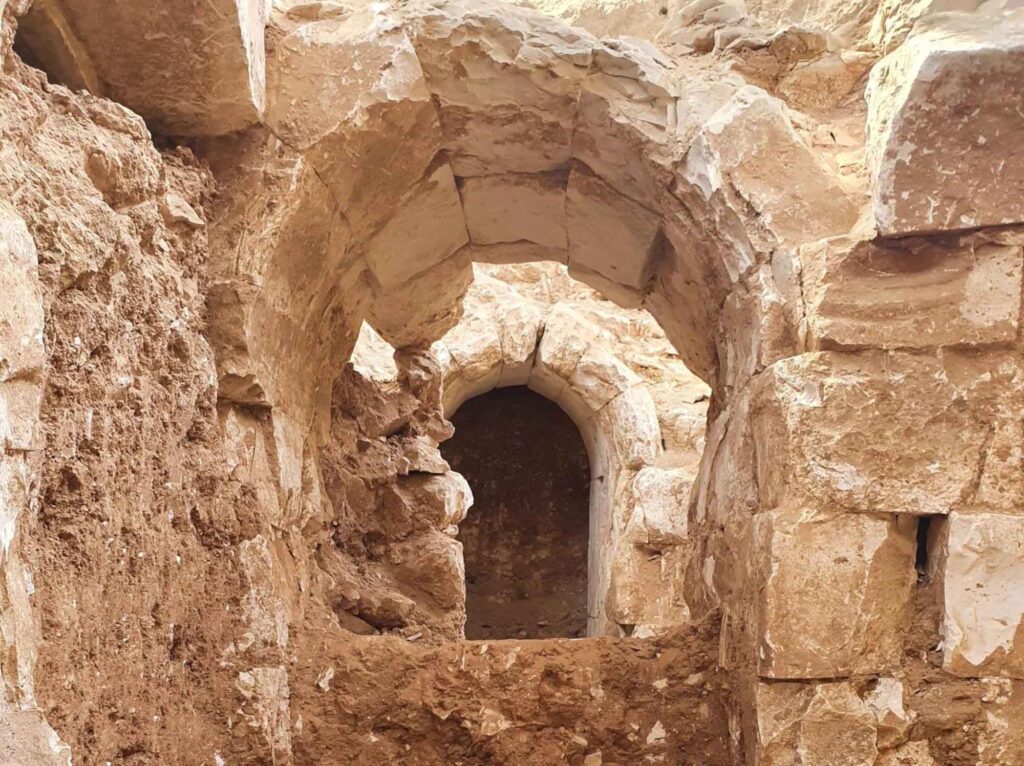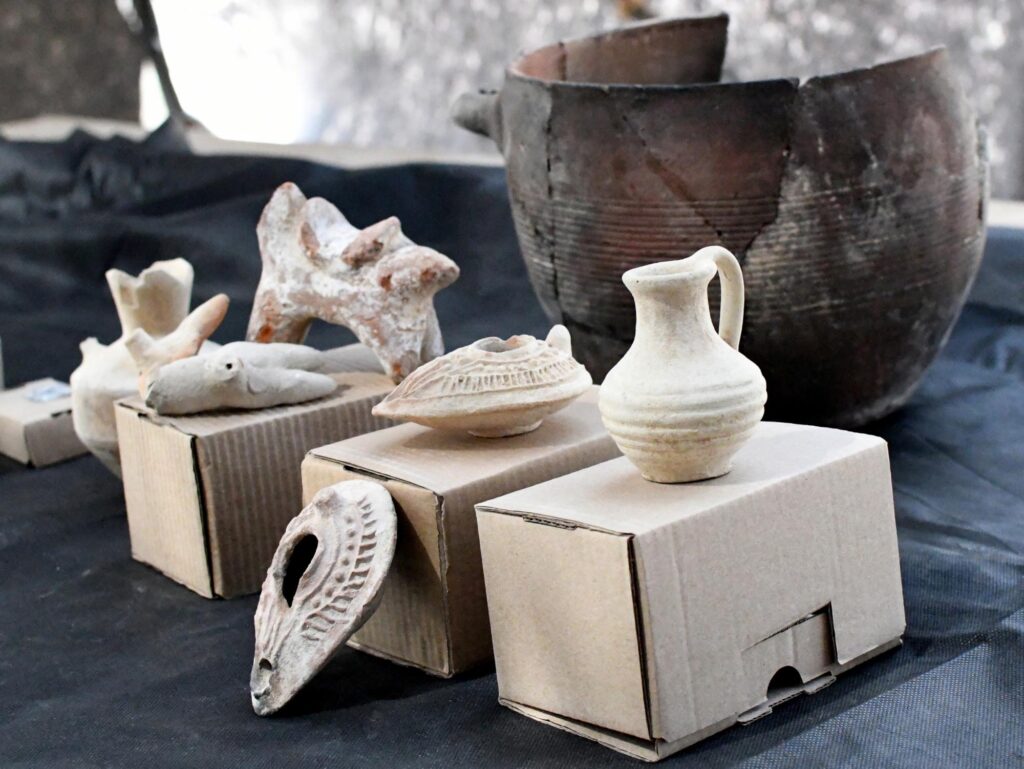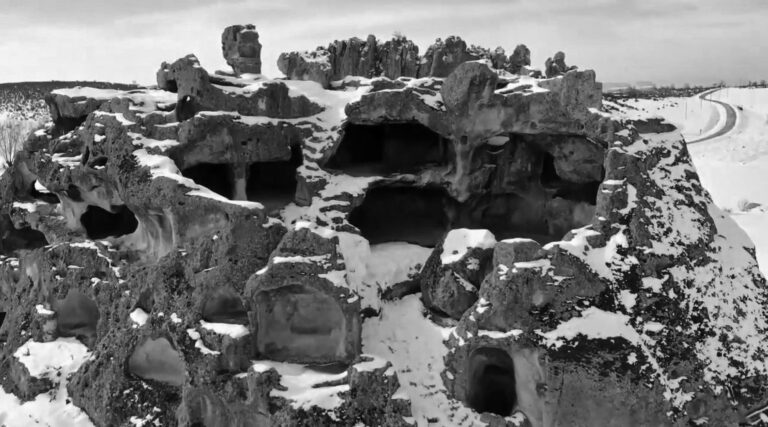Archaeologists carrying out a dig prior to the expansion of the town of Rahat have found the remains of a 1,200-year-old palatial estate that had cooled rooms to escape the heat.
The find hailed as exciting by the experts is the first of its kind in the Negev and has been uncovered by a team from the Israel Antiquities Authority.
They found not only a building courtyard, but a unique vaulted complex overlying a three-metre-deep, rock-hewn water cistern underneath it, dated to the Early Islamic period (8th-9th centuries AD).
The building was constructed around a central courtyard and comprised four wings, with rooms to serve the needs of the residents.
In one wing, there was a hall paved with a marble and stone floor and walls decorated with frescoes (wall paintings on damp plaster).
The extant small fresco fragments were finely coloured in red, yellow, blue and black.
Other rooms in the building had plaster floors, and in other rooms, very large ovens — probably for cooking — were uncovered.
Amongst the finds were fragments of delicate, decorated glass serving dishes.

Oren Shmueli, Dr Elena Kogan-Zehavi and Dr Noe D. Michael, the directors of the Israel Antiquities Authority excavations, said the unique discovery was unknown until today.
In a statement, they said: “We were surprised to discover a complex of stone-built vaults at a depth of 5.5 metres below the courtyard, standing to a height of 2.5 metres.
“The vaults were carefully constructed, and they probably led into additional underground complexes that have not yet been uncovered.
“Our biggest surprise was the discovery of an opening below the vaulted rooms, that led into a deep rock-hewn cistern.
“It seems that the stone-built underground vaults were built as storerooms to store foodstuffs at fairly cool temperatures, and the supporting vaulted structures enabled the residents to move around underground safely and comfortably, to protect themselves from the scorching summer heat, and to drink cool water from the adjacent cistern.

“The clay oil lamp sherds retrieved on the vault floors were used for lighting the dark rooms, providing evidence for the residents’ activity here.
“The luxurious estate and the unique impressive underground vaults are evidence of the owners’ means. Their high status and wealth allowed them to build a luxurious mansion that served as a residence and for entertaining; we can study the construction methods and architectural styles, as well as learn about daily life in the Negev at the beginning of Islamic rule.”
Eli Eskosido, Director of the Israel Antiquities Authority, said: “The excavation in Rahat is the result of close cooperation between the Israel Antiquities Authority and the Authority for the Development and Settlement of the Bedouin.
“In the excavation, the luxurious estate was uncovered in an area located between two ancient mosques, perhaps among the earliest ever discovered.

“By good chance, and much to the local population’s interest and excitement, the Islamic building remains have been discovered in the area planned for expanding the town of Rahat. The Israel Antiquities Authority and the Authority for the Development and Settlement of the Bedouin are planning together to conserve and exhibit the finds to the general public.”
This Thursday, on 25th August, the Israel Antiquities Authority and the Authority for the Development and Settlement of the Bedouin are opening the site to the public for free tours and for family digging and sieving activities.
The excavation was funded by the government through the Authority for the Development and Settlement of the Bedouin.


To find out more about the author, editor or agency that supplied this story – please click below.
Story By: Michael Leidig, Sub-Editor: Joseph Golder, Agency: Newsflash
The Ananova page is created by and dedicated to professional, independent freelance journalists. It is a place for us to showcase our work. When our news is sold to our media partners, we will include the link here.




